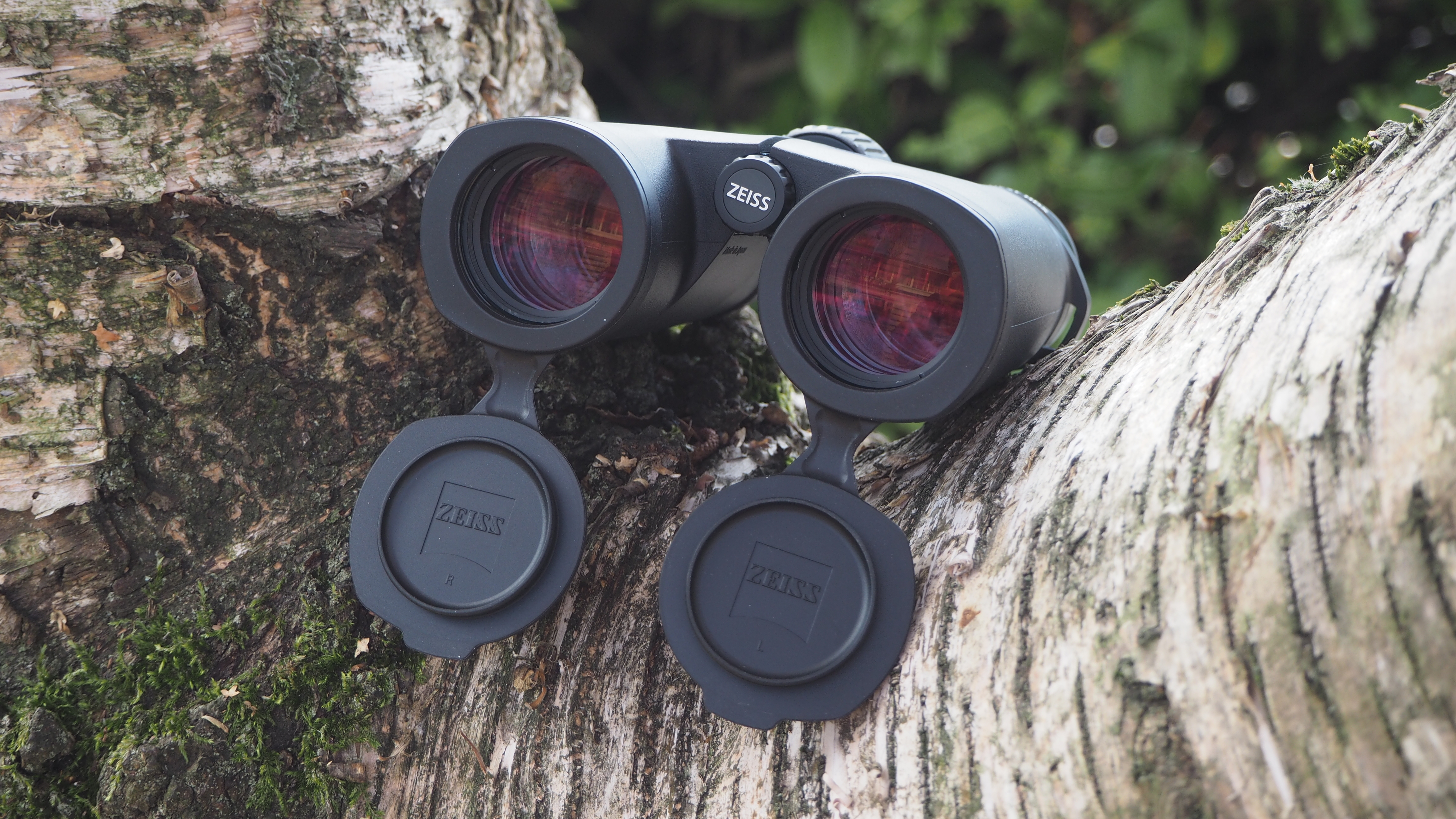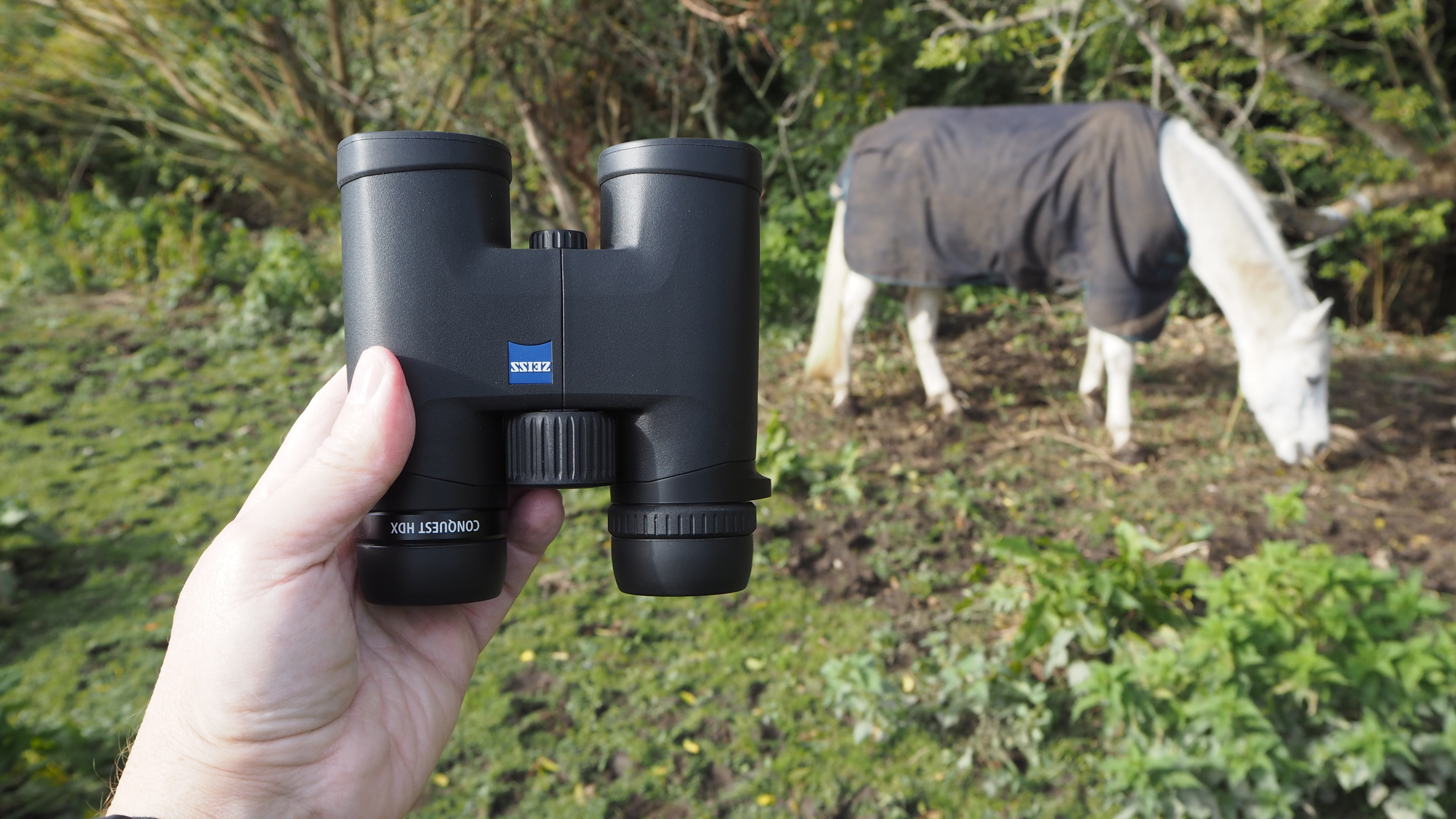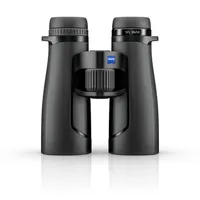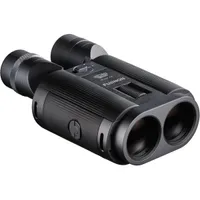Digital Camera World Verdict
All-weather nature and wildlife observers with deep pockets are the ideal audience for these capable, compact performers from the optical experts at Zeiss. Their weight feels manageable at 620g, and they will indeed fit in a jacket pocket, thus boosting both their versatility and the likelihood of me taking them out regularly. With a conventionally classic design, they look unassuming; it’s only when I peer through their eyepieces that the magic of the construction and execution is made clear. Views take on a three-dimensional quality, subjects snapping quickly into sharp focus with a spin of a centrally located focus wheel, any possible foreground or background distraction artfully blurred. It’s immediately clear that the optics here are class-leading, justifying what, at the outset, seems like a high price to pay for relatively compact if well-balanced binoculars.
Pros
- +
Class-leading optical performance
- +
Durable build and high-quality design
- +
Capable contender given their compact size
Cons
- -
Not the most affordable option
- -
No screw thread provided for mounting on a travel tripod
- -
No built-in image stabilization
Why you can trust Digital Camera World
When it comes to choosing binoculars, I can survey good-value options from the likes of Bushnell and Celestron, step up to consumer favorites bearing the Fujifilm, Canon, Nikon, and Olympus logos, or really get serious and see what Leica, Zeiss, and Swarovski have to offer.
Why choose Zeiss binoculars? Well, if it’s searingly sharp optics, a classic design, and a robust build I’m after, which should last years of use out in all elements, then the brand’s offerings are pretty much peerless. Unless, that is, I pit them against manufacturers such as Leica or Swarovski, who will give Zeiss a run for its money. And from the outset, that’s the key issue here: cost. But then, near-perfection never comes cheap.
With their heroic-sounding name, the Zeiss Conquest HDX 10x32 examined here are smaller and more affordable than the larger objective lens-incorporating Zeiss SFL 10x50 binos, yet still have sufficient heft and rigidity to feel premium when held in the hand. The main attributes to focus on – no pun intended – are that standard, albeit useful, 10x magnification, married to a 32mm objective lens size.
Compact dimensions overall require compact optics, and in theory, a 32mm lens will gather less light and project a noticeably less-bright view than a 50mm or even 42mm option. Still, we do get its maker's much-venerated T* lens coating here, and the Zeiss will slip into a jacket pocket without feeling like a dead weight. So, in theory, I could take it to gigs and sporting events, not just the great outdoors for wildlife watching and nature observation.
If I start thinking of these as a single pair of binoculars with lots of potential uses, then the outlay seems a lot more reasonable. So how do the Zeiss Conquest HDX 10x32 shape up in terms of versatility, practicality, and performance? Will they, indeed, conquer all observational challenges, or fall at the first hurdle?
Zeiss Conquest HDX 10x32: Specifications
Magnification | 10x |
Objective lens size | 32mm |
Field of view at 1000m | 118m |
Eye relief | 15.4mm |
Minimum focus distance | 1.5m |
Dimensions | 132x115mm |
Weight | 620g |
Zeiss Conquest HDX 10x32: Price
When checking out competing compact binoculars from more consumer-oriented brands, the Zeiss Conquest HDX 10x32’s price tag may seem rather large in comparison to its compact size. Cost-wise, we’re looking at around £899 / $979.99 / AU$1,569, although marginally better deals may be had by shopping around.
However, for a rugged, well-built Zeiss-branded device that performs excellently, to me, it feels like value for money. Compared to Zeiss’s own SFL 10x50, at twice the price, the smaller Conquest HDX 10x32 delivers a comparably just-as-clear and impressive viewing experience; this model seems more enticing.
The best camera deals, reviews, product advice, and unmissable photography news, direct to your inbox!
Zeiss Conquest HDX 10x32: Design & Handling
Small yet mighty appears to be the ethos here. While the design is conventional, the Zeiss Conquest HDX 10x32 binoculars not only offer a degree of waterproofing, like peers from rival brands, but are shockproof, too. Subtle rubber armor provides sufficient grip to the exterior that I could achieve a steady hold, despite these binos' compactness, giving rise to judder/wobble-free views handheld.
With no built-in image stabilization or any screw thread at the base to allow mounting on a travel tripod, these binos are all about staying active and ready for any observational opportunity. They are a device that I can whip out from my pocket in seconds, should a suitably inviting subject suddenly appear on the horizon.
Spongy rubber front and rear caps are provided to protect the binoculars' precious glass when in transit. The cover for the eyepieces can be tethered to prevent accidental loss, while the front caps hang down when in use, attached to an elastic lens surround. The lens caps are removable, should one wish, which might well be the case, as I found these caps had to be squeezed tightly into place to prevent them from accidentally popping back open; a very minor irritation in terms of handling.
Otherwise, the conventional design here gives rise to intuitive use. I could hand these to anyone – as I did to a friend I bumped into walking back from taking product photographs – and they’d immediately be up and running. The large, ridged rubber focus wheel sits directly between the eyepieces, where it’s impossible to miss. The body of the binoculars has a degree of give to it, whereby it’s possible to quickly adjust the interpupillary distance between the eyepieces to best line up with your own eyes and provide a clear, large circular view of whatever’s being observed. Twist-up eyecups and a dioptric adjustment encircling the right eyepiece complete the compact yet superior package. In terms of practical usage, these Zeiss Conquest HDX 10x32 binos handle like a dream.

Zeiss Conquest HDX 10x32: Performance
Fortunately, it’s a dream I don’t need to wake up from. A close-focusing distance of a mere 1.5 meters proves very respectable when wanting to bring something closer that is not necessarily very far away, and ideal for observing skittish squirrels and wildfowl. As the magnification is a standard 10x, I found that the field of view is also wide enough that I don’t have to keep taking my eyes away from the eyepieces to locate the subject and then re-focus, saving time and allowing me to continue doing what I picked up the Zeiss Conquest HDX 10x32 to do: observe.
The quality and clarity here is such that I was able to view a jackdaw on a neighbour’s roof attempting to pluck small flies out of the air. Not only the bird but also the insects buzzing around it were sharply rendered, which is impressive indeed from what appears, on the face of it, to be ‘humble’ pocket binoculars.
With image sharpness ably maintained edge-to-edge, I found it very hard to spot instances of chromatic aberration/purple fringing, even when actively looking for it. Views through the Conquest HDX 10x32 display plenty of color and contrast, with the device punching above what I’d expect of a 32mm objective lens, in terms of light-gathering ability and overall clarity. Yes, these are premium binoculars, with Zeiss’s much vaunted T* lens coating, but the performance is visibly premium too.
I expected to be impressed with anything Zeiss, but even when handling it straight after testing the same manufacturer’s SFL 10x50 model, it more than holds its own against its more expensive sibling.
Zeiss Conquest HDX 10x32: Verdict
Those sifting through binoculars to find the one that delivers the goods as a compact all-rounder will find their grail in the Conquest HDX 10x32. Not too big or too small, not too lightweight nor too heavy, just about everything here – including, especially, the class-leading optical performance – feels just right. Comfortably ergonomic and well-constructed, it really is hard to find fault, except, perhaps, in the cheapest elements, such as the stretchy rubber lens caps that have a habit of popping open.
But it’s the views provided that count. And here the Zeiss Conquest HDX 10x32 binoculars really deliver, with punchy contrast, color-rich, razor-sharp results. There’s no need to squint to pick up on the finest of details, from a bird’s shiny nostril to the fluffy hairs on a squirrel’s tail, whether the subject under observation is near or far. These come highly recommended as premium yet compact performers.
Features ★★★★★ | Zeiss claims its HD concept delivers 90% light transmission and the performance exceeds what I’d expect from 32mm lenses. A hydrophobic ‘LotuTec’ lens coating enables wet weather observation. |
Design ★★★★ | Zeiss’s conventional approach to binoculars design has resulted in a viewing aid I can pick up and be intuitively adjusting in seconds, allowing me to concentrate on the subject, not the gear. |
Performance ★★★★★ | Providing views with real three-dimensional depth and razor-sharp clarity, realistic colors and plenty of contrast, it’s possible to observe even the smallest of fine details with these superior Zeiss binoculars. |
Value ★★★★1/2 | Okay, so I’m being asked to pay a premium here, like I am with everything involving Zeiss’s optical expertise, but then that’s totally expected. I wouldn’t visit a Bentley showroom expecting it for the price of a BMW. |
Alternatives
If Zeiss is nice in your world, but a 32mm objective lens isn’t quite doing it for you, then check out the step-up model in the Zeiss SFL 10x50, with a whopping 50mm lens to enable continued observation as the light dims. It’s a bigger and inevitably more expensive offering as a result.
Less expensive than a top-end Zeiss model, but pricier than this one, the Fujifilm Fujinon TS-L 1640 ups the ante in the mid-range market by offering an image-stabilized 16x magnification and bright 40mm objective lens.
Gavin has over 30 years’ experience of writing about photography and television. He is currently the editor of British Photographic Industry News, and previously served as editor of Which Digital Camera and deputy editor of Total Digital Photography.
He has also written for a wide range of publications including T3, BBC Focus, Empire, NME, Radio Times, MacWorld, Computer Active, What Digital Camera and the Rough Guide books.
With his wealth of knowledge, Gavin is well placed to recognize great camera deals and recommend the best products in Digital Camera World’s buying guides. He also writes on a number of specialist subjects including binoculars and monoculars, spotting scopes, microscopes, trail cameras, action cameras, body cameras, filters and cameras straps.
You must confirm your public display name before commenting
Please logout and then login again, you will then be prompted to enter your display name.







